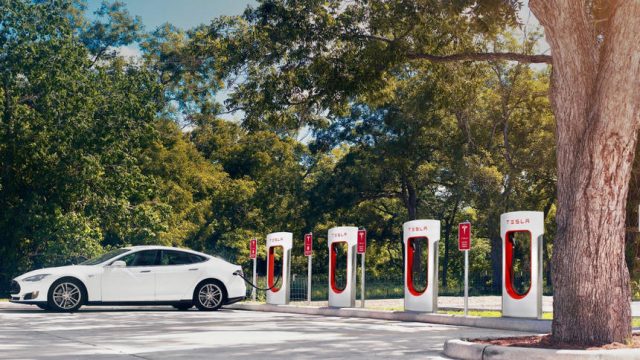When Subsidies Make Things More Expensive

When the government creates a subsidy the justification for the policy usually has to do with making the subsidized thing more affordable.
For whatever reason the object of the subsidy is deemed necessary, but not affordable, so some or all of its cost is spread out to the taxpayers.
But what if subsidies actually drive up costs? What if they create more elasticity in pricing, allowing the provider of the subsidized good or service to charge more than they normally would?
As an anecdote, that seems to be exactly what’s been happening with electric vehicles.
As part of the 2008 Energy Improvement and Extension Act, the federal government provides a $7,500 subsidy, in the form of a tax credit for the purchaser, for each of the first 200,000 electric vehicles manufactured by a given company. Beyond that threshold the subsidy is stepped down until it disappears.
Tesla recently became the first electric car company to lose the subsidy. As a result, per this report in Wired, the company is now lowering the cost of its vehicles:
In response, Tesla announced today it’s cutting the price of all its vehicles by $2,000. That doesn’t quite cover the shortfall, but for some buyers it could work out better than the full credit—particularly if it ever delivers on its promise of a much cheaper Model 3.
“If you look at behavioral economics, a $2,000 instantaneous price reduction, rather than a tax credit redeemable a year in the future, does have some benefits for some people,” says Mike Ramsey, an automotive analyst at the research firm Gartner.
Tesla was inflating the price of its cars because, with the government subsidy, the market for their cards would bear it. After all, the cost was being picked up by the taxpayers.
But this isn’t a unique phenomena. As Daniel Mitchell points out, in writing focusing on price inflation in higher education, prices for goods and services which receive subsidies tend to grow while prices for things which aren’t subsidized tend to fall:
Price signals are the foundation of a free market. While those who provide goods/services are free to charge whatever they like, nobody is obligated to pay those prices. Thus prices must find an equilibrium between value to the producer and value to the consumer. And in a competitive market, which all markets should be (but, unfortunately, often aren’t) downward pressure is put on prices through the desire of many independent producers working to capture the more of the marketplace.
Some of this is inelastic because certain things – food, housing, clothing, medical care etc. – we just need and our ability to eschew certain prices is limited. But generally this is how it works.
Subsidies distort this process. Subsidies inflate the prices the market is able to bear.
The price increases in higher education, for instance, have not been driven by the marketplace. They’ve been driven by government policies which subsidize higher education in various ways, from direct institutional subsidies to essentially turning student loans into an entitlement.
Universities can charge more. Because the market will bear more. Because the market is heavily distorted.
It could well be that subsidies are sometimes good policy, but it rarely seems as though the proponents of subsidies spend time considering about the side effects of their policies.





